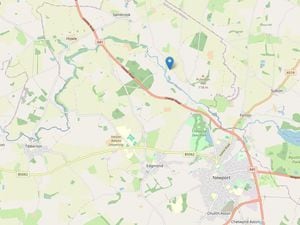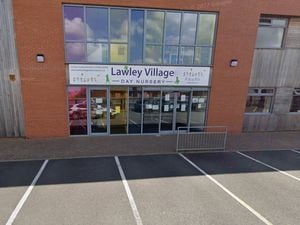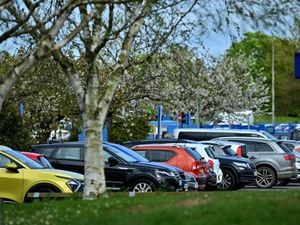Thomas Telford can be real man of note . . . in Scotland
He gave his name to Telford and was responsible for many of the buildings and structures still prominent in Shropshire today – but engineer Thomas Telford is also a hero in Scotland. And now he has been shortlisted to appear on the new £10 note north of the border.

The new polymer note is set to be issued by the Royal Bank of Scotland in the second half of 2017.
More than 400 people got in touch to nominate an historical Scottish figure who they felt had made a significant contribution in the field of science and innovation.
Of the 128 different nominees, three have been shortlisted – Thomas Telford, James Clerk Maxwell and Mary Somerville – and one will be chosen by the public to appear on the Royal Bank of Scotland's new £10 note.
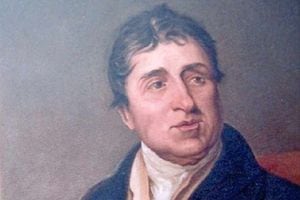
Thomas Telford, known as the "Colossus of Roads", built more than 1,000 miles of roads in his lifetime and became the first president of the Institution of Civil Engineers.
In his native Scotland, Telford designed numerous infrastructure projects such as the Caledonian Canal and the Telford churches, as well as harbours and tunnels.
He engineered many road and canal projects in Shropshire after he became the county surveyor and much of his work remains in use across the UK to this day. He died in 1843.
Through his wealthy patron William Pulteney, Telford became Surveyor of Public Works in Shropshire in 1787.
In 1790 he designed a bridge carrying the London-Holyhead road over the River Severn at Montford, the first of some 40 bridges he built in Shropshire, including major crossings of the Severn at Buildwas, and Bridgnorth.
"He was also involved in the building of the A5 through the county.
Physicist James Clerk Maxwell's discovery of the unified theory of electricity and magnetism directly led to the application of electromagnetic radiation.
Scientist Mary Somerville was considered a "true pioneer" and was jointly nominated to be the first female member of the Royal Astronomical Society in 1835.
The final decision on the £10 note will be made following a public vote, which opened this week and runs to Sunday.
It takes place on the Royal Bank of Scotland's Facebook page – www.facebook.com/royalbankofscotland – where images of each of the nominees has been posted along with biographies to help people make up their mind.
The portrait with the most 'likes' will be chosen to feature on the new £10 note.
Commenting on the nominees, RBS chief marketing officer David Wheldon said: "I am delighted that we have been able to engage the public in this process. We received many high quality nominations.
"The strength of our shortlist is indicative of the significant contribution that Scotland has made to the field of science and innovation.
"I would be very proud for any of these nominees to appear on our new £10 note. Anyone who wants to have their say should visit our Facebook page and cast a vote.
"I look forward to finding out which of these great figures is chosen."
Ten things Thomas Telford has done for us (and Scotland)
Telford itself: He gave the name to Telford New Town in 1968. Strangely, so far as is known, nobody at all locally had suggested it – the name was imposed by Housing Minister Anthony Greenwood.
Perhaps even more strangely, Telford's achievements in the new town named after him are relatively modest in comparison to his masterpieces elsewhere.
Pontcysyllte Aqueduct: It is one of the wonders of the world, a status rubber-stamped by it being granted World Heritage Site status as recently as 2009.
It is a majestic fusion of function and form, carrying a canal high above a wide valley.
The aqueduct established Telford's reputation and remains an enduring symbol of his skill and innovation. Built by Telford between 1795 and 1805, the canal runs through an iron trough 1,007ft long, 11ft 10ins wide, and 5ft 3ins deep.
The iron was supplied by William Hazeldine from his foundries at Shrewsbury and nearby Cefn Mawr and the total cost was £47,000.
When Telford wrote his autobiography he blew his own trumpet without mentioning the contribution of William Jessop, the overseeing engineer. And by the way, the meaning of Pontcysyllte (pronounced "Pont-kus-ull-te") is simply "connecting bridge".
Welsh holidays: Well, where would we have been without the A5? Telford was in the vanguard of the roads revolution which more or less literally paved the way for our modern road transport system today. The Government turned to him to improve the road from Shrewsbury to Holyhead and, separately, that from Shrewsbury to London. In the Welsh section, he would not tolerate steep gradients. His improvements to Holyhead Road took place in stages between 1815 and 1829.
Through North Wales it still follows the original line surveyed and chosen by Telford, and the road is considered a historic route.
Montford Bridge: His first bridge in Shropshire, and his first major project of its kind, so it is not surprising he took no risks and had a design which is considered conservative and conventional.
It was completed with the help of convict labour within budget on Lady Day, 1792. The bridge was widened and redecked in the 1960s.
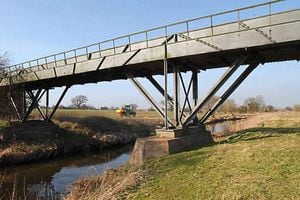
Longdon-on-Tern Aqueduct: It's now high and dry, but this is a historically important engineering jewel. It is the world's oldest surviving cast iron aqueduct, and listed as an ancient monument. Instead of the heavy, solid, masonry structures of the past, he built a streamlined aqueduct which carried the canal in a trough created by one-inch (25mm) thick iron plates.
Some have seen this small aqueduct, built in 1795, as a trial run for his great masterpiece at Pontcysyllte, although the designs are in fact quite different.
Shrewsbury Jail. The Dana was designed by JH Haycock, but in 1787 Telford was brought in to supervise construction and in this capacity he met John Howard, the great prison reformer.
The pair struck up a rapport, and went over the plans together. The upshot was that Telford remodelled the plans to create a more "humanitarian" institution.
Exactly how far Telford deviated from the original plans is not really clear. The entrance to the jail is generally attributed to him, and carries a bust of Howard above it.
As a spin-off from Howard's visit, Telford was to use convicts as labourers, on the basis that this was better than them sitting in their cells doing nothing.
Wroxeter Roman City: One of the projects in which Telford put prisoners to work was in excavations at the Roman City of Uriconium, just a few miles from Shrewsbury. A well-read man with an endless enthusiasm for learning, it fascinated him, and Telford and his unusual team of labourers made some major discoveries.
His work established Uriconium as a major archaeological site of national importance, and thereby helped protect it from the predations of those who hitherto had seen it as a handy supply of building stone.
St Mary Magdalene Church: Telford is usually associated with roads and bridges, but he also built three churches in Shropshire of which his first and best was St Mary Magdalene in Bridgnorth, dating from 1792.
Less well regarded are St Michael's at Madeley (1793-96) and St Leonard's at Malinslee (1805), which both share an unusual octagonal shape.
Cantlop Bridge: For many years historians refused to connect the bridge with Telford and dismissed it as being of little historical importance.
It is Telford's only iron bridge in the county remaining in situ, making it a rare survivor.
And in Scotland. The Caledonian Canal is a great monument to his genius. Worthy of the £10 note alone.


